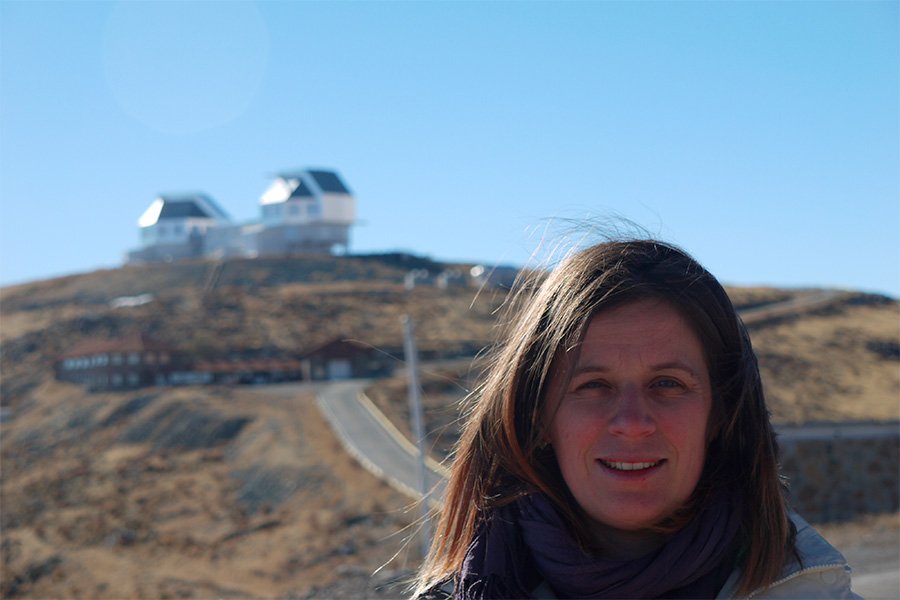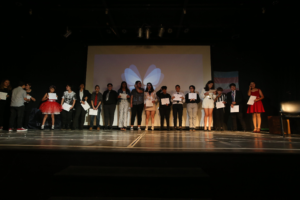Astrophysicist Paula Jofré is the first Latin American woman to be named as a scientist who is on the path to change the world by US magazine Science News.
For the past four years, Science News has chosen 10 scientists under 40 who have the potential to make real changes to the world (and beyond) from a list of either Nobel Prize winners or members of the National Science Academy.
“I am very honoured to find out that there are people in my community observing what I do and recognising that my science is interesting and novel,” Jofré said to La Tercera. “Sometimes it is difficult to defend your own ideas and convince yourself that you’re on the right track, and these prizes help you to have confidence in yourself and take the reins of your own work.”
Paula Jofré (@pdjofre) borrows a technique from biology to trace the stars’ evolution. #SN10 @udp_cl @AstroUDP https://t.co/yTeUYbTM17 6/11
— Science News (@ScienceNews) 26 de septiembre de 2018
Jofré is an academic of astrophysics at the University of Diego Portales in Chile who studies the chemical composition and history of stars. The work that she is most proud of, and most recognised for, stated Science News, is her work charting the first family tree of the Milky Way.
The idea for this body of work came at a science event at Cambridge University in England. She met Cambridge Anthropologist Robert Foley, who mentioned the use of evolutionary trees to track the genetic history of animals and humans. Stars don’t hand down DNA like living creatures, but they do pass things down to future generations.
Stars often explode when they die, propelling their elements throughout the cosmos. The next generation of stars is created from the collapsing clouds of these elements, allowing scientists to track “families” of stars who share chemical composition.
Jofré worked with Foley and other colleagues to create the family tree, and through their research discovered three branches, two of which were already known. The third was an entirely new branch of stellar nurseries, the existence of which had not been discovered.
By expanding to more groups of stars, she told Science News, “we could use these trees to learn something about the evolution of our whole galaxy,” Jofré says. “That has been so exciting.”
The astrophysicist was fascinated by stars from a young age, despite attending a girls’ school where an occupational counsellor advised her not to choose a job that didn’t leave enough time for family. Astrophysics was not an ideal choice for a young lady. Jofré said that if anything, this made her want to do it more and as a snub to the counsellor, her incredible scientific achievements coexist alongside her life with her partner and two children.
Her family keep her grounded, and help her focus on what is important, “which is not like, papers, papers, papers, papers, papers,” as her partner Thomas Maedler puts it. “We’re always this little nucleus, the four of us, this little atom that is walking around.”
ESO’s Very Large Telescope in Chile has captured the most detailed image ever taken of the Medusa Nebula (also known Abell 21 and Sharpless 2-274). https://t.co/AF5xBp5MUC pic.twitter.com/9CC8FmWrv6
— Domenico Calia (@CaliaDomenico) 18 de septiembre de 2018
Just as Jofré is paving the way for female Latin American scientists, Chile is a pioneering country in terms of astronomy, as the Atacama desert’s cloudless skies create the perfect environment for star-gazing. The Giant Magellan Telescope (GMT) began construction in August and its cutting-edge technology is purported to be able to collect light from the earliest days of the universe.
Astronomy in Chile, Jofré told La Tercera, is “competitive and international,” adding that “we still need to understand the value of pure scientific investigation, but I like to see how society receives astronomy in a very positive way. It’s exciting to see the possibilities in the future with all of the telescopes being installed here.”
In November, Jofré will give her first astronomy course to the general public at UDP, with the hope of getting more people to learn about the stars in an interactive way.









